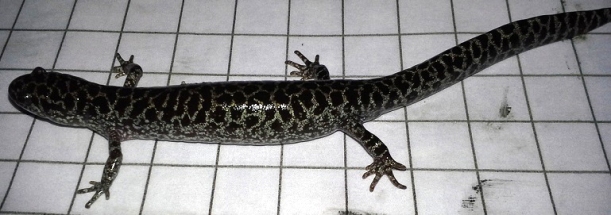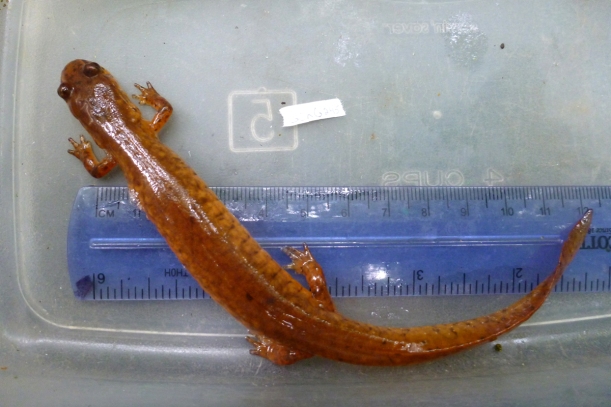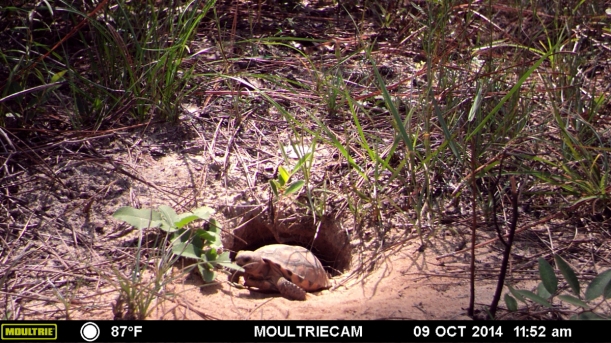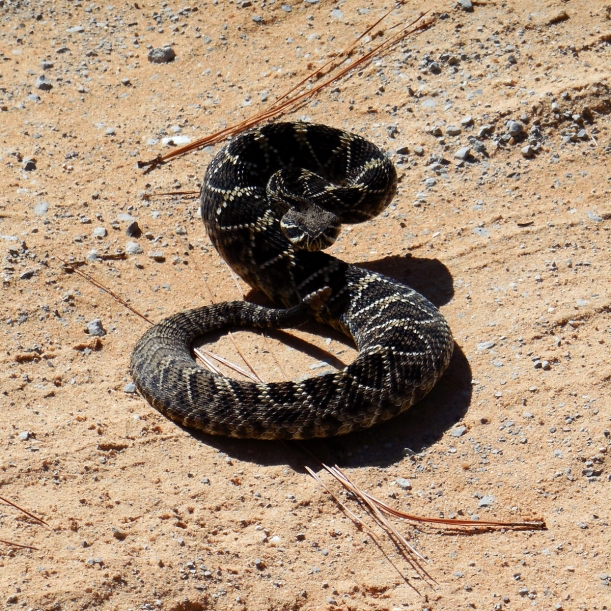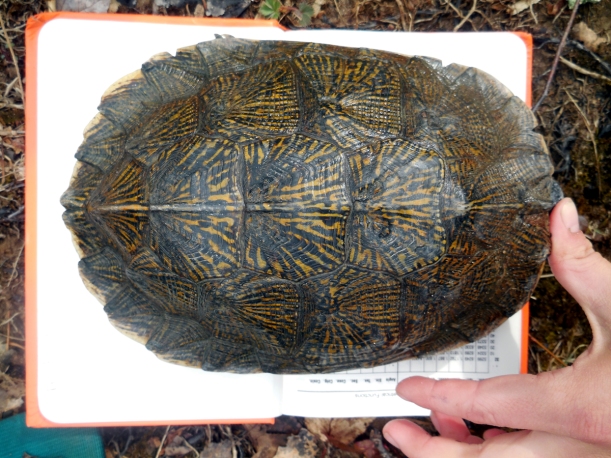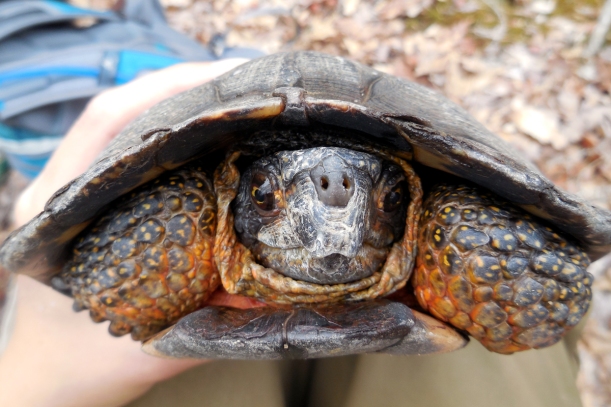As the days are getting colder, snakes are slowly making their way back to their dens. My technicians are still tracking their progress, but little-by-little each of our 15 radio-tagged snakes are getting closer to the location where they will spend their winter sleep. This summer was a huge success as we collected ecological data for our rattlesnakes in our pre-burned habitat. Much of this success was made possible due to a great team of technicians: Alyssa Hoekstra, Andrew Brown, Zack Maisch, Alex Dyson, and Mark Herr (lab undergrad extraordinaire)!
Our snakes led us to some great data this past summer. Males did not disappoint us, and they typically had us hiking over large tracts of land. Sometimes, males were able to travel over 1-km in 24 hrs, up and over large mountains. Much of this traveling was to find receptive females, and we observed many mating encounters as well as male-male combats!
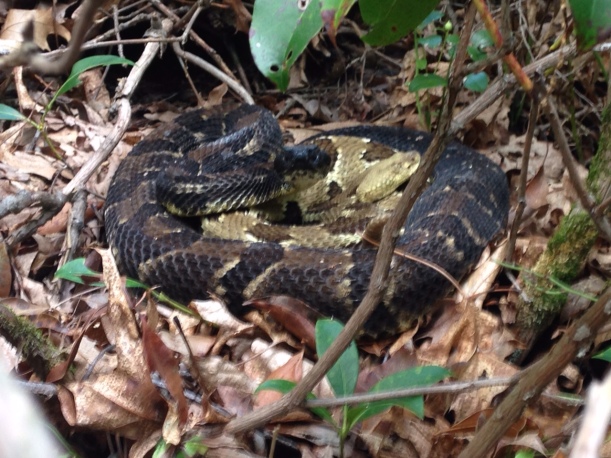
Large male (black phase) wrapped around a female (yellow phase). Typically males will follow females and attempt to entice her to mate by rubbing his head along her body. This female obviously didn’t want to play those games and just remained coiled. (Photo by A. Dyson)
Females stayed a little closer to the den sites and study area. The females main concern was foraging for food, but sadly none of our females at the main study site were gravid this year. Given the high abundance of chipmunks and mice throughout central PA this summer, I would not be surprised if many female rattlesnakes were gravid next summer. It is believed that good reproductive years for timber rattlesnakes typically follow good food years. Although we were not measuring small mammal abundance last year, I suspect it was lower than this year. Following the conclusion of our project, we may be able to shed some light on this relationship between rattlesnakes and their prey. Additionally, prescribed fire can enhance small mammal abundances, which may lead to increased reproductive rattlesnake fitness!

Rattlesnake consuming a chipmunk… Alvin!!!! (Photo by Z. Maisch)
In addition to following the snakes around, we also took some time to characterize the pre-burn study sites and the available resources for timber rattlesnakes. We measured small mammal abundances, operative temperatures, available vegetation, and acorn mast production. We will compare these available habitat characteristics to next year’s to see how these variables change based on year-effects and the prescribed burn.

Two chipmunks captured in a Tomahawk trap. Each small mammal receives an ear tag so we can identify it at a later data when it is captured again. This mark-recapture technique allows us to measure small mammal abundance throughout the study area. (Photo by A. Dyson)
In addition to the prescribed fire project, we also embarked on two new projects with the help of Tom Radzio! Tom is a colleague from Drexel University, and he is using cameras to observe tortoise behavior outside of burrows in the southeastern United States for his dissertation. Tom was gracious enough to loan us a few cameras so that we could embark on these great, new side-projects.
For the first side project, we are currently looking at the ecological trade-offs between thermal resource acquisition and predation at gestation sites of various sizes. We collected some great data regarding potential predators, including black bears, bobcats, raccoons, and hawks. Whereas we have already pulled all of our cameras from the field, we are still collecting data from these videos. Currently, I have a great team of undergraduates assisting me with this process, including: Mark Herr, Michaleia Mead, and Tommy Cerri. We hope to have all of these data collected and analyzed by the end of November! We are predicting that we will see a higher amount of predator activity at more open, larger gestation sites, but we will also find higher quality thermal habitat at these same sites as compared to smaller, more enclosed gestation sites. We are looking forward to the results!

Bobcat walking through a large, open gestation site. Whereas the bobcat did not show any interest in the foam, rattlesnake models that we placed at the site, the mere presence of the predator suggests that an encounter is possible.

A black bear attacking a foam model at an enclosed, smaller gestation site. The bear first approached two foam, rattlesnake models and swatted off their heads. It then bit two more models (one shown here) before taking off out of the gestation site.
For the next side project, Tom Radzio and I are looking at when rattlesnakes decide to go back into their dens, how this correlates with environmental temperatures, and if predators are attracted to these den sites during this time of rattlesnake ingress. We are currently collecting data at these den sites and we have a great undergraduate, Tommy Cerri, who is assisting us with analyzing these videos.

Rattlesnake basking in front of a den site. If you look closely you can see some small grey iButtons recording environmental temperatures.
This fall will be filled with a lot of data analyses, writing, and hopefully a few published results. Stay tuned as we finish up a few of these projects. I will make sure to update everyone on the results to each of the finished products.

Field work in action! Me capturing a small timber rattlesnake. (Photo by T. Langkilde)
This post originally appeared on chowey.net!





















